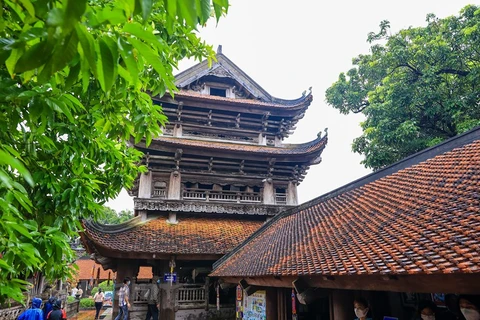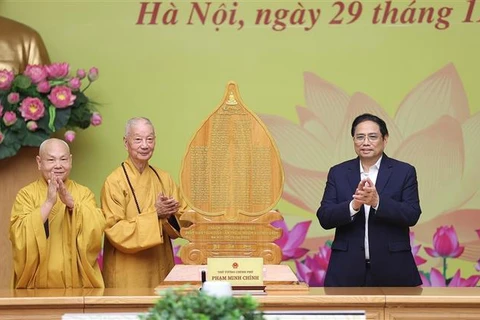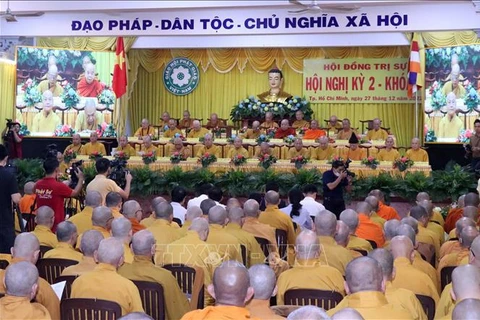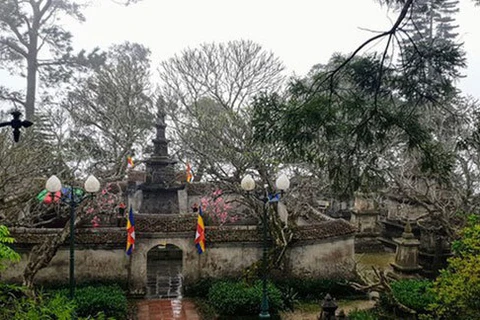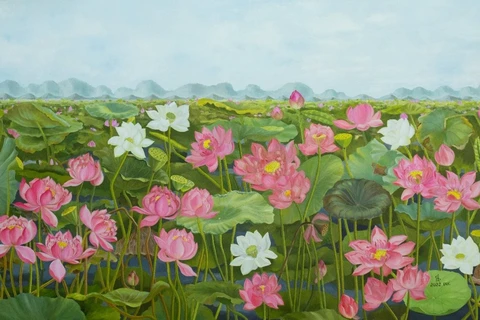Hanoi (VNA) – Since its introduction into Vietnam some 2,000 years ago, Buddhism has joined the group of indigenous beliefs and constituted the traditional culture of Vietnam. With its long history of development, Buddhism has created a massive architectural heritage of pagodas and towers, enriching the Vietnamese treasure.
Pagodas are not only a specific expression of Buddhist architecture but also associated with the national culture, a place to spread morality, reflecting the customs and practices of the people through each historical period.
Over the time, the look of pagodas is gradually changing, many of which are modified from the original.
Realising the problem, the Vietnam Buddhist Sangha (VBS), the Institute of Religious Studies, the Institute of Monuments Conservation, and the National Museum of History in Hanoi on April 15 organised a conference “Vietnamese Buddhist Architecture – Unity in Diversity” to assess the shortcomings found in the Buddhist architecture nowadays in Vietnam.

Most Venerable Thich Tho Lac, head of the Cultural Affairs Commission of the Vietnam Buddhist Sangha’s Central Committee, at the conference. (Photo: VNA)
According to Most Venerable Thich Tho Lac, head of the Cultural Affairs Commission of the VBS’s Central Committee, many Buddhist architectural works have been renovated, repaired and expanded improperly, which caused poor harmony with the old relics.
Improper repairs and changes to pagodas make them less attractive to Buddhists and the international public," the official said.

A visitor to the exhibition "Vietnamese Buddhist Architecture-Unity in Diversity". (Photo: VietnamPlus)
Talking about solutions to preserve Buddhist architectural heritage, Venerable Thich Le Tri, deputy head of the Cultural Affairs Commission of the VBS’s Central Committee, said that it is urgent to implement a project to build standards on the Buddhist architecture and cultural heritage.
Venerable Thich Le Tri suggested that the VBS affiliates at all levels and state agencies who are responsible for granting construction permits for Buddhist architectural establishments must evaluate the designs of the construction to meet requirements of Buddhist architecture and culture.
Architect Dinh Viet Phuong said that it is necessary to accelerate the digitalisation of the Vietnamese Buddhist artistic and architectural heritage.
With the development of technology, the trend of digital transformation is inevitable in conservation, museum and tourism activities.
“A relic is a complex consisting of artifacts, landscape, architecture, inscriptions, bibliography, festivals, relic records, and legal documents related to the management, conservation and promotion of cultural values, which can be referred to as the relic ecosystem. Therefore, digitalising a relic means digitalising this entire ecosystem," said architect Phuong.
Phuong said that this work not only supports the restoration of the relic but also attracts visitors thanks to digital technologies
In addition, the digital database system of Buddhist architectural and artistic heritage also acts as a digital library with an open database to support monks, nuns, Buddhist practitioners, domestic and foreign researchers in doing research, understanding, restoring and promoting values./.
| Nearly 300 archives and photos featuring the most outstanding features of Vietnamese Buddhist architecture are being exhibited at the Vietnam National Museum of History (VNMH), 25 Tong Dan street, Hoan Kiem district, Hanoi. The exhibits are from three surveys conducted across the nation by the Culture Commission of the VBS’s Central Committee in collaboration with the Institute of Religious Studies, the Institute of Monuments Conservation, the VNMH, as well as many monks, nuns, and specialists. They also include documents preserved by the Vietnam National Museum of History and the Institute of Monuments Conservation. The exhibition, entitled “Vietnamese Buddhist Architecture – Unity in Diversity”, is divided into three sections; Buddhist architectural images and artifacts currently kept at the VNMH; typical features of Vietnamese Buddhist architecture; and images of Vietnamese Buddhist architecture built in recent years. The exhibition runs until May 15, 2023./. |


